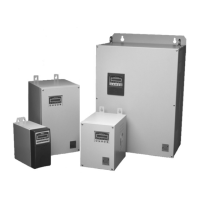Why is the Zener MSC-3 motor unstable?
- EEdward DownsAug 21, 2025
If the Zener Controller motor is unstable, it might be due to several reasons: * The SLIP COMP or FLUX PLUS settings are too high. * The motor voltage or frequency is incorrect. * The CURRENT LIMIT is set too low. To resolve this, verify that the MOTOR NAMEPLATE RPM setting matches the motor's rated speed and the NAMEPLATE CURRENT setting matches the motor's nameplate current. Try reducing the SLIP COMP and FLUX PLUS settings. Ensure the MOTOR VOLTAGE and MOTOR FREQUENCY settings are correct in the MOTOR menu. Also, increase the CURRENT LIMIT setting.


